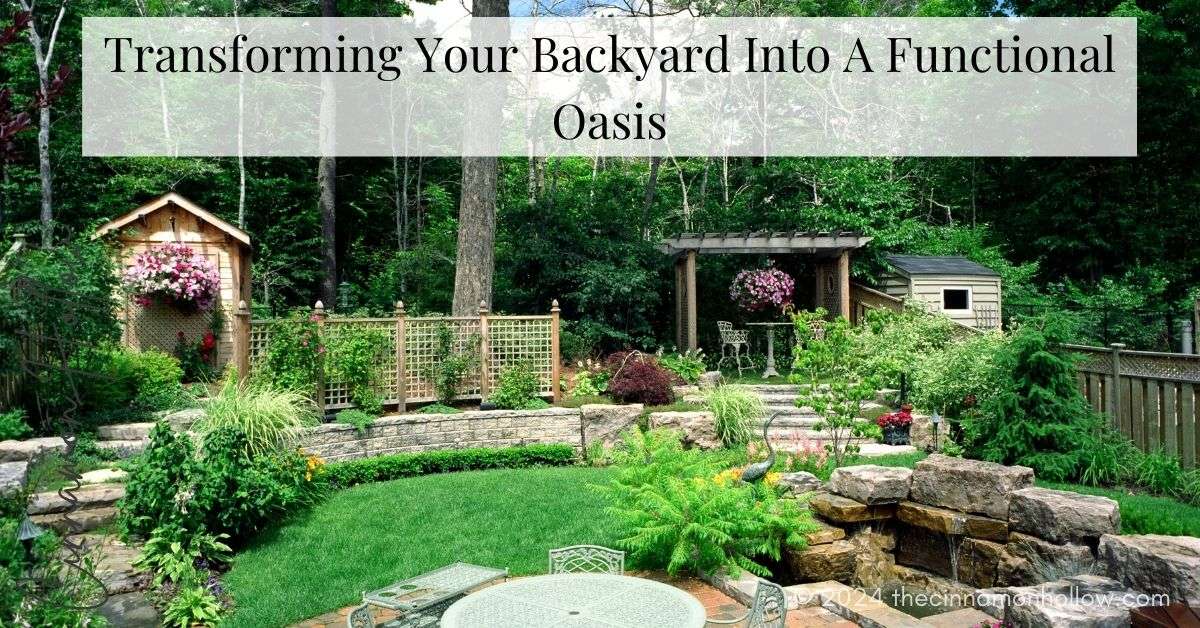Why Your Backyard Deserves A Makeover
In today’s fast-paced world, backyards offer a sanctuary from everyday stress. Yet, many homeowners overlook their potential. Transforming your backyard can significantly enhance your lifestyle and property value. Companies like Inside Outside Space provide insights and ideas on seamlessly achieving this.
Your backyard can be more than just a patch of grass; it can be a functional retreat that meets your needs. For instance, consider incorporating elements like a vegetable garden, an outdoor kitchen, or a play area for children. These enhancements make your yard more enjoyable and increase your home’s overall appeal. With a little creativity and planning, you can turn it into an extension of your home that everyone will enjoy. Picture yourself hosting summer barbecues, cozying up by an outdoor fire pit, or simply enjoying the tranquility of a beautifully landscaped garden.
Assessing Your Space
Before diving into a backyard makeover, you must understand what you’re working with. Consider factors such as size, sunlight, and existing features. Take detailed notes and sketch out a rough plan. Analyzing these elements will help you make informed decisions about the most impactful changes. Did you know professionally landscaped homes can see a return on investment of 5-12% more than homes without landscaping? Properly budgeting for a landscaping project from the outset will save you time and money. Remember to account for elements like soil quality, drainage, and potential problems that might need addressing.
Designing For Functionality
Determining Your Needs
A functional backyard caters to your needs and lifestyle. Think about what you want—outdoor dining, a play area for kids, or a garden. Zoning your yard can help create distinct areas for different purposes. When planning, use a checklist to ensure you cover all bases:
- Determine primary use (entertaining, relaxing, gardening).
- Measure and map out the space.
- Consider the natural elements (sun, wind, rain).
- Think about remodeling costs and budget.
These considerations will guide your design choices and ensure your backyard meets your needs. A spacious patio with ample seating and a grill area would be ideal if you enjoy entertaining. For families with children, a sandbox or trampoline might be essential. Tailoring the space to your lifestyle will make it more enjoyable and functional in the long run.
Maximizing Small Spaces
Vertical Solutions
With the right design, small backyards can be just as impactful as larger ones. Use vertical space to your advantage. Vertical gardens, wall planters, and hanging pots are excellent options that add greenery without occupying floor space. Opt for multi-functional furniture, such as benches with built-in storage. These solutions utilize every inch effectively, ensuring that even compact areas are visually appealing and functional. For more ideas, check out ways to make a small yard feel bigger and more functional.
In addition to vertical gardening, consider foldable or stackable furniture that can be easily stored when not in use. Mirrors and reflective surfaces can also create an illusion of more space. Strategic use of color and light, such as lighter shades and well-placed lighting fixtures, can further enhance the sense of space in a small backyard.
Incorporating Greenery
Choosing Plants
Plants are vital in creating a serene and inviting backyard. Choose a mix of perennials and annuals for year-round color and interest. If you’re new to gardening, start with low-maintenance plants like succulents or native species that thrive in your climate. Native plants are often more resilient and require less water and care, making them an excellent choice for beginners. Grouping plants with similar water needs can save resources and make maintenance easier.
Planters and containers can add versatility and mobility to your garden design. Larger planters can be focal points, while smaller ones can fill in gaps and add layers of texture and color. Consider planting aromatic herbs like rosemary and lavender near seating areas to enhance the sensory experience of your backyard.
Outdoor Living Spaces
Adding Structures
Outdoor living spaces extend your home’s usable area. Consider adding a patio, deck, or pergola. These features can provide shade and define seating or dining areas. Pergolas, for instance, can be adorned with climbing plants or fabrics to create a cozy, shaded retreat. Don’t forget about lighting; well-placed lights can make your backyard usable even after the sun sets. Solar-powered lights are eco-friendly, while string lights add a whimsical touch.
Create a welcoming outdoor space with weather-resistant furniture like teak, aluminum, and synthetic wicker, and add a fire pit or heater for year-round use.
Water Features And Landscaping
Calming Elements
Water features such as ponds, fountains, or waterfalls add a soothing element to any backyard. The sound of running water can create a peaceful ambiance and mask unwanted noise from nearby streets. These features can be as simple or intricate as your budget allows. Integrating landscaping elements like pathways, rock gardens, or raised beds can bring a professional touch to your outdoor space. Thoughtful placement of these elements can guide visitors through your garden and highlight specific areas you want to emphasize.
Consider natural stone and gravel pathways to connect different zones within your backyard. Raised garden beds can add height and structure, making planting and maintaining your garden more accessible. Combining various textures and materials in your landscaping design can add depth and visual interest to your yard.
Maintaining Your Oasis
Regular Upkeep
Ongoing maintenance is key to keeping your backyard oasis looking its best. Regularly check and trim your plants, clean water features, and update furnishings as needed. Seasonally, inspect your yard for any necessary repairs or improvements. This might include reseeding grass, replenishing mulch, or tightening loose hardware on furniture. With a little effort, you’ll ensure your outdoor space remains functional and beautiful all year round.
Creating a maintenance schedule can help you stay on top of tasks and address issues before they become problematic. In the spring, focus on planting and preparing the garden. Summer might require more frequent watering and weeding, while fall is the time to clean up and prepare for winter. By breaking down maintenance into manageable tasks, you can enjoy a stunning and thriving backyard with minimal stress.
Key Takeaways
- Understanding the potential of backyard spaces.
- Practical steps to revamp your outdoor area.
- Inspiring ideas for enhancing functionality and aesthetics.







